Meeting Trouble Half Way
Crispin Green’s graphic novel tells the story of volunteers who gave up their lives to fight Fascism in Spain, and is inspired by his grandparents who were there
Wednesday, 1st January 2025 — By Dan Carrier
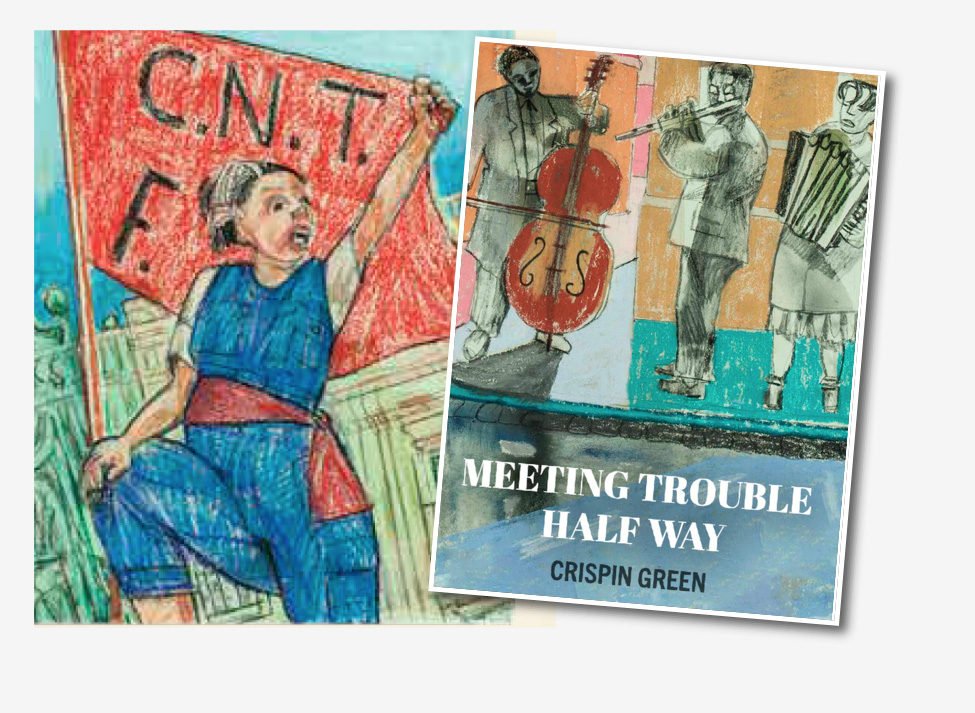
An illustration from Meeting Trouble Half Way [Crispin Green]
THE Fascists were advancing.
George Green, a cellist from King’s Cross, had seen it all as an ambulance driver and veteran of the International Brigades. He knew he had a righteous cause on his side.
But his enemies were armed with the latest technology from their backers in Nazi Germany, and with battle-hardened troops from Morocco, General Franco’s forces were on the march.
The Republican government, desperate to cling on, had a plan: in June 1938, with the war going against them, they launched a major attack at the Ebro river in north-east Spain.
It would lead to the longest and bloodiest battle of the civil war and on its last day, in November 1938, George was killed as he sought to help injured comrades.
George was joined in Spain by his wife, Nan Green, and now their grandson, Crispin, has produced a stunning graphic novel that lays bare what his grandfather and grandmother went through.
The stories of those who gave up their lives to fight Fascism in Spain have long captured imaginations, he explains.
From across Europe, volunteers poured into the country in 1936 after General Franco’s Fascist rebels launched a coup. A bloody civil war ensued, with Nazi Germany and Fascist Italy using the conflict to test their murderous war machines against innocent civilians.
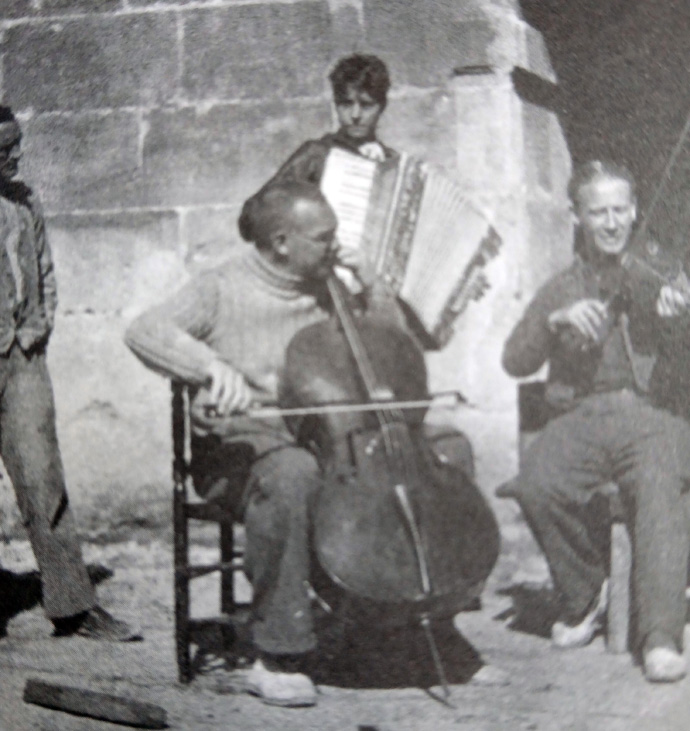
Cellist George Green with Nan behind him on the accordion, playing for patients at Huete Hospital, near Madrid [Crispin Green]
For artist Crispin the Spanish conflict has always been personal: he knew George died while fighting for democracy and Nan worked tirelessly with a medical unit saving the lives of front-line Republican fighters.
He wanted to chart the stories of those brave volunteers who went to fight, as the poet C Day Lewis wrote, “… because our open eyes could see no other way”.
An art school graduate who studied fine art, Crispin has used his retirement to spend more time with his easel. With around nine images per page, Crispin had a large number to create. His answer was to do each oversized, so he could include as much detail and texture as possible. “I pinned large sheets of paper to an easel and used pencil, watercolour and chalk,” he says.
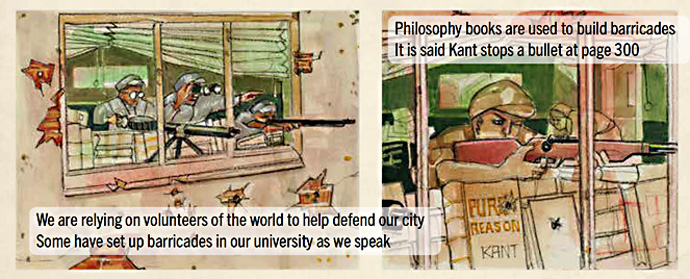
Some of Crispin Green’s illustrations from his graphic novel of the International Brigades, Meeting Trouble Half Way
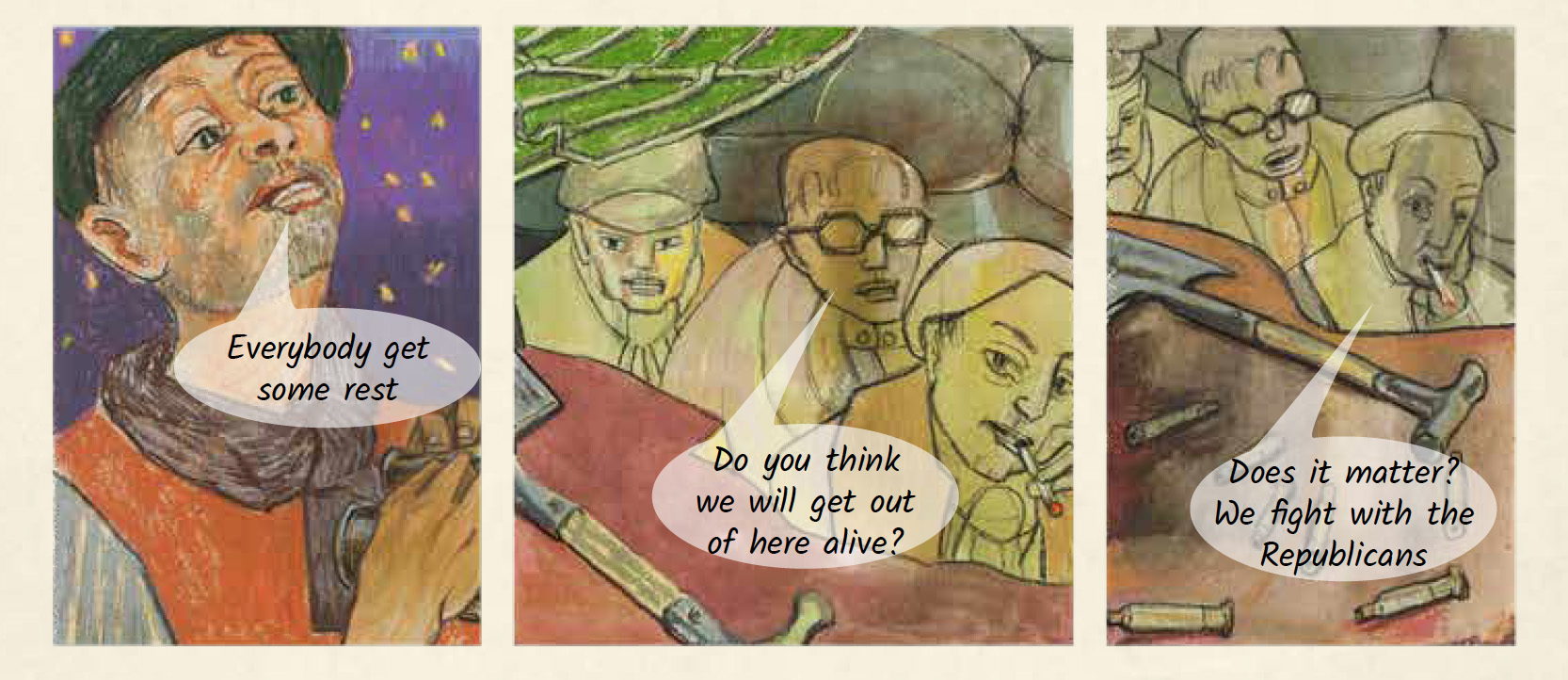
The narrative was not mapped out in advance. “I was not sure where the story was going until I started writing it,” he says.
The stories of Spain have been a constant in Crispin’s life, but his family’s involvement has only come to him slowly.
Records show that when George applied to join the brigades he gave his address as Heathcote Street, next to Coram’s Fields. As Crispin describes, the starting point was a trip to the King Street offices of the Communist Party, where volunteers could sign up.
Nan had moved to London having been brought up in the Midlands. George was from Manchester. A cellist, he headed south to find work. When the war began, George volunteered to drive an ambulance from London to Spain.
He was joined by politician Wogan Phillips, and when Philips was wounded and returned to London, he told Nan how desperately short-staffed the hospitals were. She headed to Spain and Wogan paid for her children – Crispin’s father Martin and his aunt Frances – to be educated at the progressive Summerhill school.
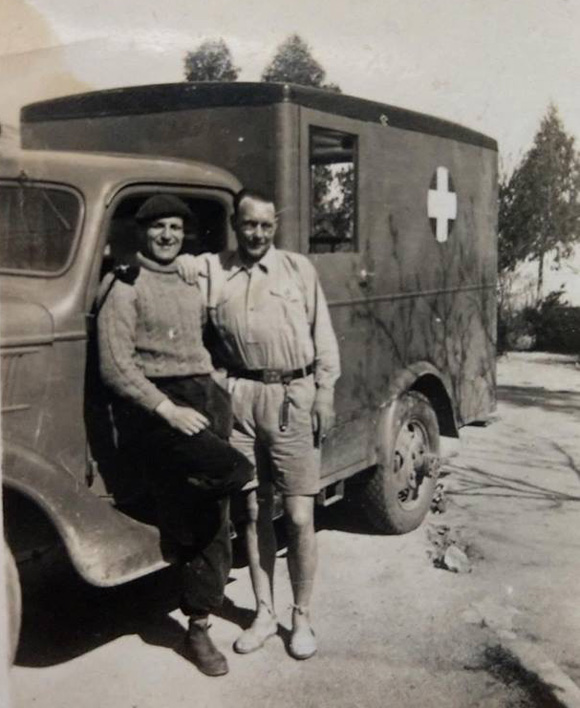
Ambulance driver George Green, right, with a comrade
George joined the British Battalion of the International Brigades. Tragically his body was never recovered, and when she died in 1984 her ashes were scattered on the battlefield where her husband breathed his last.
Once the Republican government had fallen, Nan travelled to Mexico with Spanish refugees, returning to London in 1939. She got involved in the international peace movement and lived in China during the 1950s, and came back to London in 1960.
She later worked for publishers Lawrence and Wishart and was secretary of the International Brigades Memorial Trust.
Crispin says he has found parallels of his father’s experience with his own. “After I was born, Martin and my mother Sheila, who lived in Camden Town, separated,” he explains.
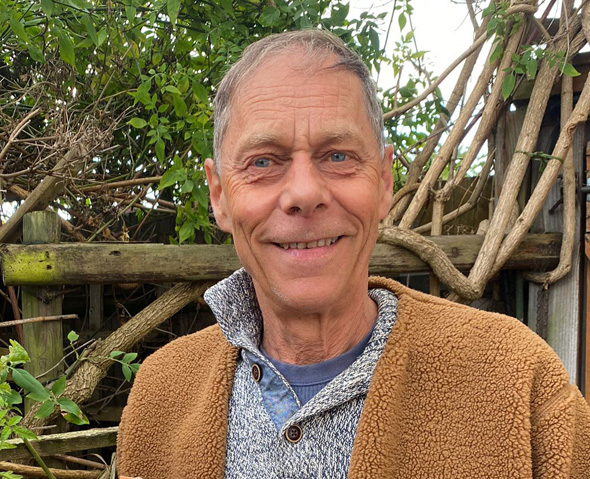
Crispin Green
“My mother took us to live in Canada. I was aged around five – the same age Martin lost his father in Spain. I didn’t really meet my father until I was an adolescent. I only knew him through his letters to me.”
On the family’s return to England, Crispin, aged 14, began quizzing his father. “I asked about my grandparents and Martin said he did not know much about it himself. I was told George had died in Spain as he drove an ambulance at the battle of the Ebro. I had always had this image of my grandfather driving an ambulance and being blown up,” he says.
“My father and his sister Frances essentially became orphans as George never came back from Spain and Nan sent them to boarding schools while she worked in China. Martin only really got to know his own mother later in life.”
And growing up in Canada further removed him from his family’s story.
“No one in Canada knew about the Spanish civil war – my generation growing up were taught about the Second World War but with no mention of Spain. It was not on the curriculum and not seen as important,” he says. “But on our return, I began to see Nan and got to know her.
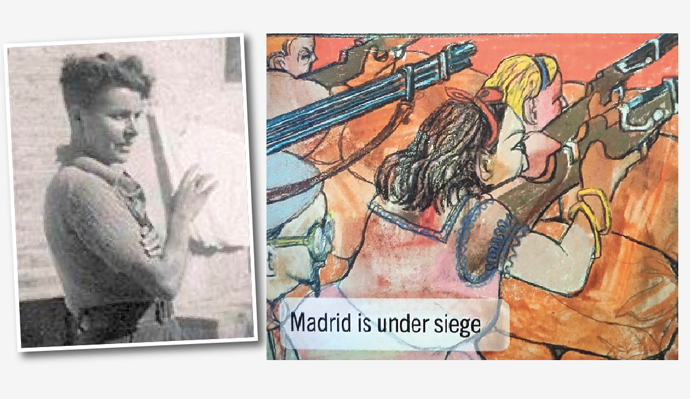
Nan Green [Crispin Green]; and an illustration from Meeting Trouble Half Way
“Martin persuaded her to write her memories. She said ‘why would anyone want to read this?’
Nan was very much about the here and now and didn’t see the point of dwelling on the past. But thankfully she did write it all down.
“Over the last 10 years of her life, I got her to open up about what had happened in Spain.”
Crispin travelled to the Ebro with his father in 2005 to see a memorial unveiled. It was a moving experience.
“Visiting the sights of civil war battles and the conflict’s history, I got an almost physical reaction. You could really sense what had happened – the stories, the danger, the passion. It had all been building up in me.”
There were further clues Crispin could draw on when writing his Spanish story. His father had written a play based on George’s experience, but never told Crispin about it. “I only discovered it after he had died,” he says. “It was his way of dealing with his father’s story.”
Crispin’s book references various other elements of the Spanish conflict: Republican government clerk Arturo Barea became known as the Voice of Madrid for his basement broadcasts during the siege. He would escape with his life, get to England and write The Forging of a Rebel trilogy, one of the best books about the Spanish crisis ever written.
Other characters in the story are drawn on those who went to fight: A Welsh miner, a Jewish East Ender and an Oxford college student show the breadth of support for Spain. An opening scene has them meeting as volunteers keen to enlist.
We also visit the Battle of Cable Street, when the East End turned out to stop Oswald Mosley’s fascists marching through Jewish communities.
And finally, another true element to Crispin’s story involved a volunteer called Jim Higgins who saved the life of a 10-year-old during a battle.
“I wanted to pay homage to the many brave people, and the incredible stories they created, fighting for freedom,” says Crispin.
In doing so he has discovered the sacrifice his own flesh and blood made to fight the far right.
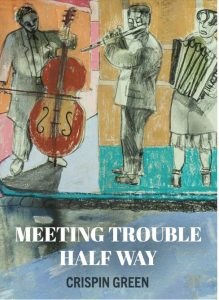
• Meeting Trouble Half Way. By Crispin Green. Published by Glass Spider. It can be ordered from bookshops or availabe from Amazon